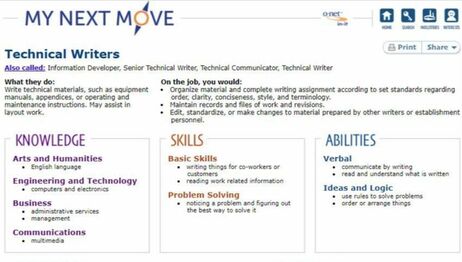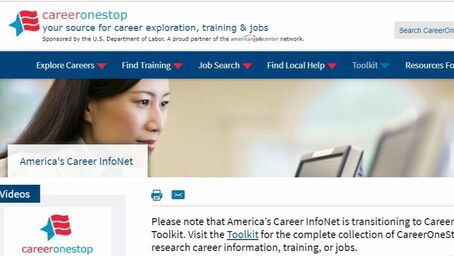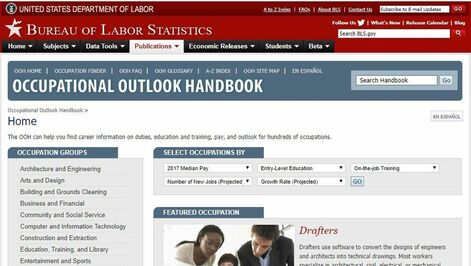Branding? Job Positioning? What IS all that?The terms “branding yourself” has already become a part of many people’s vocabulary, while others are still wondering about its definition. While “branding” (which is defined as “to make an indelible mark or impression on somebody or something”) is a valuable strategy, you may be more comfortable with the idea of simply positioning yourself to be successful in your job search and career. Many jobseekers don’t realize they have already positioned themselves — they just haven’t articulated it yet. Maybe you’re known as “the sales manager that makes quota, no matter what’s going on in the economy,” or “the engineer that can speak in language the customer understands.” That’s your positioning. To cultivate the job positioning that will help you reach your career goals, you must understand and be able to communicate what makes you exceptional and compelling. You must find a way to stand out in a crowded job search. If you’re not known for something, you won’t be known for anything. One size does not fit all. Knowing your skills and professional qualifications — and being able to articulate them — will also help you navigate applicant tracking systems (ATS). Position yourself effectively to attract connections, opportunities, and job offers. How to Develop Your Job PositioningTo identify how to position yourself, it helps to examine a couple of key issues:
Be aware of the kind of work you are willing to do, and the kind of work you don’t want to do. Make a list of the things you like to do, and what you don’t like to do. Look to your work history for clues to your job positioning. What in your work history did you do to make things better? Look for instances where you showed leadership and accomplishments. Check out your existing online profile. What comes up when you Google yourself? What is your social media presence? What are you known for online? Begin with the end in mind: What job do you want? Then figure out what qualities and attributes set you apart from your competition. Additional resources to help you identify what makes you stand out:
Research Your Profession to Identify Your Job PositioningResearching your desired job can also help you identify your unique job positioning. Looking at job postings can help, but you should also consider going further in-depth. These sites can help: O*NET Online (https://www.onetonline.org/) This website was created for the U.S. Department of Labor/Employment and Training Administration by the National Center for O*NET Development. The O*NET program is “the nation’s primary source of occupational information,” according to the site. It contains information on hundreds of occupations and is available to jobseekers at no cost. Every occupation requires unique knowledge, skills, and abilities. These occupational characteristics are outlined on the site. The occupational descriptions, which include descriptions of day-to-day work, along with qualifications and interests of the typical worker, allow jobseekers to identify unique job positioning opportunities for themselves in their job search. You can also access the O*NET Resource Center, a free tool (available for immediate download) to assess your occupational interests. The tool offers personalized career suggestions based on your interests and level of work experience. Access the tool here: https://www.onetcenter.org/IP.html My Next Move (https://www.mynextmove.org/) You can start your research on an O*NET affiliated site, My Next Move. The site is an interactive tool for jobseekers to learn more about career options. It includes descriptions, skills, and salary information for more than 900 professions. You can identify careers through keyword search, by browsing industry classification, or through the O*NET Interest Profiler. My Next Move is maintained by the National Center for O*NET Development under the sponsorship of the U.S. Department of Labor/Employment and Training Administration. When you identify a profession, you can assess the knowledge, skills, and abilities required for success in the role. These can often provide guidance for job positioning. The “Personality” and “Technology” sections also give insight into your personal positioning. The “On the Job, You Would” information includes common job functions. Look to see if these are areas where you excel — this can be a point of differentiation. Also check out the “Also Called” information under the occupation for related job titles you can use in your job positioning tagline. America’s Career InfoNet (https://www.careerinfonet.org/) This website is affiliated with the U.S. Department of Labor’s CareerOneStop program. The website includes occupation and industry information, salary data, career videos, education resources, self-assessment tools, and career exploration assistance. Occupational Outlook Handbook (https://www.bls.gov/ooh/) The Occupational Outlook Handbook (OOH) provides information on what workers do, working conditions, what qualifications are required for success in the position, pay, job outlook, similar occupations, and sources of additional information for research for more than 300 occupational profiles. To find an occupation, browse the occupational group of interest on the left-hand side of the website, or use the “A-Z Index” (if you know the specific occupation). You can also enter a job title into the “Search Handbook” box at the top of the site. You can also search for occupations by pay range, education level, training, projected number of new jobs, and projected job growth rate — using the “Occupation Finder” or occupation selector drop-down menus on the home page. If you can’t find an occupation you are interested in, look in the alphabetical index, using similar occupational titles to search for an occupation. Glassdoor (https://www.glassdoor.com/) You can also research your prospective employer to identify how to effectively position yourself to work at that specific company. Glassdoor is an excellent way to assess what is important to the employer and how you might fit in. Dos and Don’ts For Job PositioningHere are things you should do:
Here are some things you should not do:
Job Positioning Can Make It Easier to Find a JobRecruiters and hiring managers need help knowing what kind of position you’re focused on. It’s harder to find a job when you don’t know what kind of job you want. Conversely, it is easier to find a job if you know what kind of job you want. There are fewer opportunities for average performers to be found in the hiring process, but there are tremendous opportunities for stars. Positioning helps you identify where you can be a star performer and then make the case (through your work and your career communication documents) to support this claim. The next step is to align your job search with your positioning. Make sure your résumé and interview preparation supports this and makes your case. Know Your Job Positioning Before You Look for a JobMany jobseekers develop their job positioning when they are looking for a new job. But job positioning can help you be more effective — and visible — in your current job. In your current job, get attention for the work you’re already doing:
Develop your own communications plan in your current position. Increase your personal visibility by speaking, writing, and participating in social media. Once you’ve identified your job positioning, see how you can incorporate it into your everyday work life. This will make you worth more to your current employer (remember, superstars stand out!) and make you more attractive as a job candidate when it is time for you to look for a new position. A 21-day plan to a new job New Year, New Job. A 21-Day Plan To A New Job New Year, New Job. A 21-Day Plan To A New Job
A new year is a great time to assess where you’re at professionally. Is it time for you to make a job change? Or a career change? This 21-day challenge is designed to help!
During this challenge, you’ll take 30 days of consistent action in five different areas: 1. Where Are You Now? 2. Where Are You Going? 3. What Sets You Apart? 4. What’s Your Plan? 5. Let’s Do This! Take action each day in one of these areas (see the list below for ideas). This challenge will reward effort, not results. But results will come when you take consistent action, day after day, in meeting your goal! For best results, enlist an accountability partner to help you complete the challenge. Ideally, it will be someone who is looking to make a job or career change too, so you can keep each other accountable and on track. For best results, check in with each other daily. You can choose to use either the Challenge Calendar or the Challenge Planner to plan and track each day’s activities. Write down the activity you will do and put a big red “X” on each day you complete a challenge activity. At the end of the month, you want as many spaces marked off as possible on your Calendar or Planner. There are three ways to conduct the challenge:
It’s up to you! At the end of each week during the challenge, reward yourself for good performance. Enjoy a special outing or anything else that will encourage you to keep going! Here are suggested actions within each of the areas. Where Are You Now? Evaluate your social media presence Evaluate your social media presence
Where Are You Going?
What Sets You Apart?
What’s Your Plan?
Let’s Do This!
Completing the 21-Day Challenge
|
Categories
All
powered by Surfing Waves
AuthorMandy Fard is a Certified Professional Resume Writer (CPRW, CMRW) and Recruiter with decades of experience in assisting job seekers, working directly with employers in multiple industries, and writing proven-effective resumes. Archives
July 2024
|
-
Greater Los Angeles
and Kern County
-
[email protected]
.












 RSS Feed
RSS Feed



